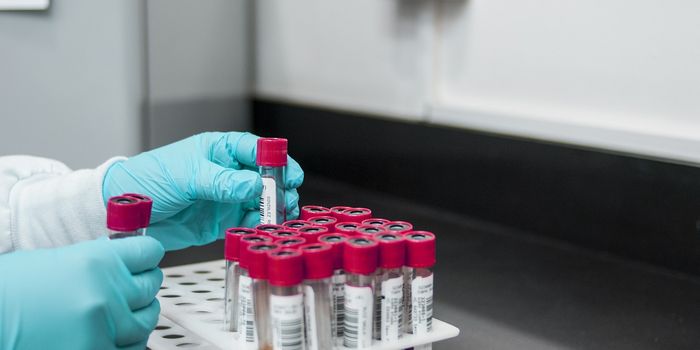New Molecule gets Scientists Closer to an HIV Vaccine
Scientists have been trying to develop a vaccine for HIV for many years. When this work began in the 1980s, it was found that this vaccine would have to be different from others; the virus mutates rapidly and has a protective coat that enables it to avoid detection and get around the immune system. Now, a new molecule has been designed by researchers at the University of Maryland (UMD) and Duke University that may help the successful development of an HIV vaccine. They created a new kind of vaccine candidate that when tested, stimulated an immune response against the sugars that make up the shield that protects HIV.
"An obstacle to creating an effective HIV vaccine is the difficulty of getting the immune system to generate antibodies against the sugar shield of multiple HIV strains," explained Lai-Xi Wang, a Professor of Chemistry and Biochemistry at UMD. He was an author on the study reporting the molecule, published in Cell Chemical Biology. "Our method addresses this problem by designing a vaccine component that mimics a protein-sugar part of this shield."
The vaccine component that Wang designed with his collaborators uses a fragment of an HIV protein, which is joined to a sugar group. After it was injected into rabbits, the new vaccine candidate initiated a response that produced antibodies against the sugar shields of four different HIV strains. Successful vaccines are designed to launch an immune response to an illness, such as antibody production, without causing the illness itself.
The HIV sugar shield has presented challenges to vaccine design. It resembles structures humans naturally carry, and it does not elicit a robust immune response. They can all mutate, and there are over 60 strains of HIV. Targeting a specific protein in one virus may not confer protection against all strains.
Even so, a protein called gp120 was selected for this work. A portion of the protein, which is part of the protective envelope surrounding HIV, was used for the fragment. In unusual people who can control HIV without medication, because their immune system attacks the disease, those attacks are mounted against gp120.
A vaccine worth disseminating will protect against all HIV strains, so the research team zeroed in on the part of gp120 that all strains have. A synthetic chemistry method they pioneered was utilized to connect the gp120 fragment with a sugar molecule that is also common to all strains.
After the protein-sugar vaccine candidate was injected into rabbits, the researchers found that the rabbits' immune systems made antibodies that matched the gp120 seen in four strains of HIV that are predominant today. A vaccine candidate made up of the protein fragment and not the sugar group generated antibodies that mostly bound to only one strain’s gp120.
"This result was significant because producing antibodies that directly target the defensive sugar shield is an important step in developing immunity against the target and therefore the first step in developing a truly effective vaccine," Wang said.
The rabbits' antibodies were able to bind the gp120 but unfortunately did not prevent infections of cells by live HIV. Wang noted, however, that humans often need up to two years to build up immunity against HIV; this animal study lasted two months.
"We have not hit a home run yet," Wang acquiesced. "But the ability of the vaccine candidate to raise substantial antibodies against the sugar shield in only two months is encouraging; other studies took up to four years to achieve similar results. This means that our molecule is a relatively strong inducer of the immune response."
Next, the researchers plan to conduct studies in combination with other vaccine candidates that last longer. They want to find where the antibodies are binding to gp120 and hopefully increase ITS efficacy at stopping HIV.
Sources: AAAS/Eurekalert! Via University of Maryland, NIAID, Cell Chemical Biology




![Everything You Need To Know About NGS [eBook]](https://d3bkbkx82g74b8.cloudfront.net/eyJidWNrZXQiOiJsYWJyb290cy1pbWFnZXMiLCJrZXkiOiJjb250ZW50X2FydGljbGVfcHJvZmlsZV9pbWFnZV9mNTM1ZjIyYzA5MDE5ZmNmMWU5NmI0ZDc4NWU2MzdiZTZlN2I5ZDk5XzE4NDUuanBnIiwiZWRpdHMiOnsidG9Gb3JtYXQiOiJqcGciLCJyZXNpemUiOnsid2lkdGgiOjcwMCwiaGVpZ2h0IjozNTAsImZpdCI6ImNvdmVyIiwicG9zaXRpb24iOiJjZW50ZXIiLCJiYWNrZ3JvdW5kIjoiI2ZmZiJ9LCJmbGF0dGVuIjp7ImJhY2tncm91bmQiOiIjZmZmIn19fQ==)




